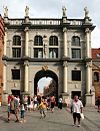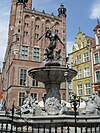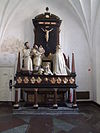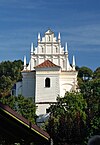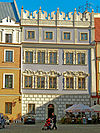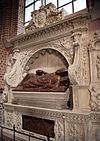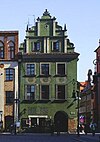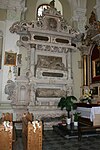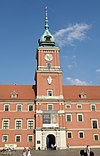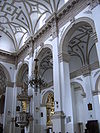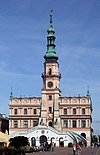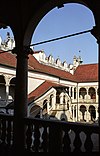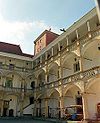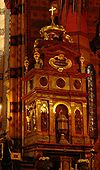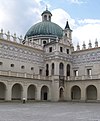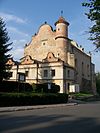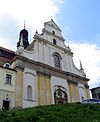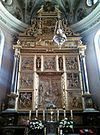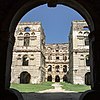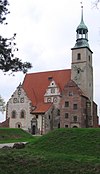Mannerist architecture and sculpture in Poland
[1] The style includes various mannerist traditions,[1] which are closely related with ethnic and religious diversity of the country, as well as with its economic and political situation at that time.
The first half of the 17th century is marked by strong activity of the Jesuits and Counter-Reformation, which led to banishing of progressive Arians (Polish Brethren) in 1658 and which has its reflection in architecture (spread of baroque).
[citation needed] The mannerist architecture and sculpture have two major traditions: Polish-Italian and Netherlandish (Dutch-Flemish), that dominated in northern Poland.
[12] The major inspiration for many structures in Poland was early renaissance constructions at Wawel Hill – Sigismund's Chapel (1519–1533), tomb of king Sigismund I inside the chapel (1529–1531), and Wawel Castle's arcade courtyard (1506–1534), as well as buildings in Antwerp - City Hall (1561–1565), houses at Grote Markt and funeral sculptures by the Flemish artist Cornelis Floris de Vriendt.
In conclusion the main criterion of differentiation between types of mannerism in Poland is the source of inspiration and in many cases the founders conception played an essential role for the final shape of the construction (e.g., Tomb of Jędrzej Noskowski in Maków Mazowiecki by Willem van den Blocke is an example of Polish mannerism inspired by Tomb of Sigismund I with a founder depicted sleeping).
[13] Triangle gables of late Gothic origin and large windows are the features of Dutch urban architecture in Northern Poland.
The architecture of the 16th-century Polish mannerism is marked by common usage of richly embellished attics of palaces and houses, arcade courtyards and side towers.
This type of the palace is known as Poggio–Reale because it combined a square building with a central loggia with side towers, as in Villa Poggio Reale near Naples (1487–1489) according to conception of Baldassare Peruzzi and Sebastiano Serlio.
[18] Netherlandish (Dutch-Flemish) and Polish-Italian architectural traditions were not isolated and penetrate each other to create (among others) a unique composition of Krzyżtopór Palace.
Warsaw, as one of the main cities of the Polish-Lithuanian Commonwealth and due to its role as seat of Parliament and King, was a place of meetings of cultures.
Both king Sigismund III and his son Władysław IV Vasa as well as magnates purchased many sculptures in Prague, especially those by Adriaen de Vries.
They were destroyed by the Germans during the World War II (e.g., all mannerist constructions in Warsaw and many Jewish pray houses) or damaged in Allied aerial bombings (Gdańsk, Wrocław).









